
Founded in 1886 near Lichfield, birthplace of Ben Johnson, Whittington Heath is one of the older clubs in England. In 1927 HS Colt redesigned Whittington Heath. All that remain are #s 12-17 and 10 & 11 greens & fairways. Before becoming a golf course the area was used for horse racing. The road on the NLE 6th is evidence of the old track and the NLE clubhouse retained the shape of a racing stand. Being next door to Whittington Barracks, the course was originally for military personnel. After some time civilians were allowed access and eventually the Ministry of Defense sold the course to the members in 1994.
Given my high regard for the course, my apprehension concerning the redesign due to HS2 was understandable. As seen by the map below, the rail line cut the course in two. Although the track hasn't been layed, the new course and house are now complete. Jonathon Gaunt secured the commission and radically altered the design. There are six completely new holes, including five sharing a little valley beyond the old 1st green. The 8th is also completely new. Gaunt managed to use the old green and fairways from the old 10th & 11th. He built new tees radically altering the shape of what are now the 9th & 16th. The other major changes include a new 17th using the old 18th green and the 18th using the old 1st corridor to a new green. New bunkers were also part of the redesign.
I had two questions in mind before playing Whittington Heath since the new work. First, how badly will the train effect the solitude of Whittington Heath. Well, HS2 has been cancelled. Regardless, it is clear HS2 has created some long transition walks which to be frank, have somewhat spoiled the intimacy of Whittington Heath. Second, how well will the five (1-5) new treeless holes blend with the old holes. Sadly, these new holes don't blend visually or architecturally. These new holes are big, modern concepts which is in contrast to the more subtle terrain and design of the older holes. The new 8th is the sole exception. That said, the club has removed a large number of trees on the older part of the property which is a positive step. Still, heather is almost completely absent from the course.

Card of the new course.

A warm hello.
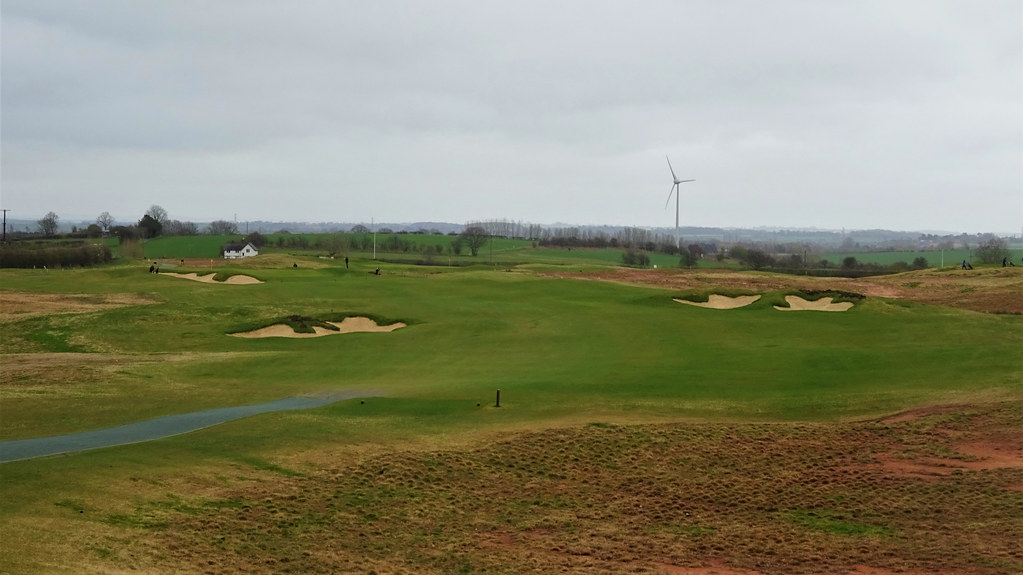
After a long transition, we reach the par five second hole. Once being told the hole is a sweeping dogleg to the right, I immediately noticed an issue with the drive. What is there to stop longer club hitters playing down the 3rd fairway? The answer came quickly, internal OoB stakes. I don't know why the hole was designed this way, but given it is new and there was plenty of evidence to suggest club players are long enough to use the incorrect (and dangerous) fairway, somebody made a big mistake. That said, the hole is good for the likes of me.

On the second shot, if one happens to push the drive right, there is a cracking view of the green. In the fairway, its blind if one isn't fairly long. Its a strange setup.

The approach can be tough if one gets the layup wrong.

Heading back up the hill, the third is a demanding par 4. The fairway between the bunkers is criminally narrow.

A safe drive in the fairway leaves an exacting approach.

A pin point par 3 follows on the 4th.

The final hole of this new section of the property climbs the hill toward the house. The second shot on this par 5 is blind unless one is long.

Perhaps the most interesting of the seven new greens.


The opening five holes are good if lacking a bit of character or flair. One of my biggest apprehensions was drainage, but this seems to have been dealt with very well. I didn't notice any serious issues unless one drifted off the ample fairways.
The 6th is an old friend; it was the old 5th. Trees have been removed on the left to allow mere mortals to carry the dip. While a good hole, I think an opportunity was lost. This could be a dramatic hole over the chasm with a bunker draping down the far face and perhaps one further up to catch out the flat bellies.


The 7th is another old friend. This used to be the 4th, an intimate high quality short hole.
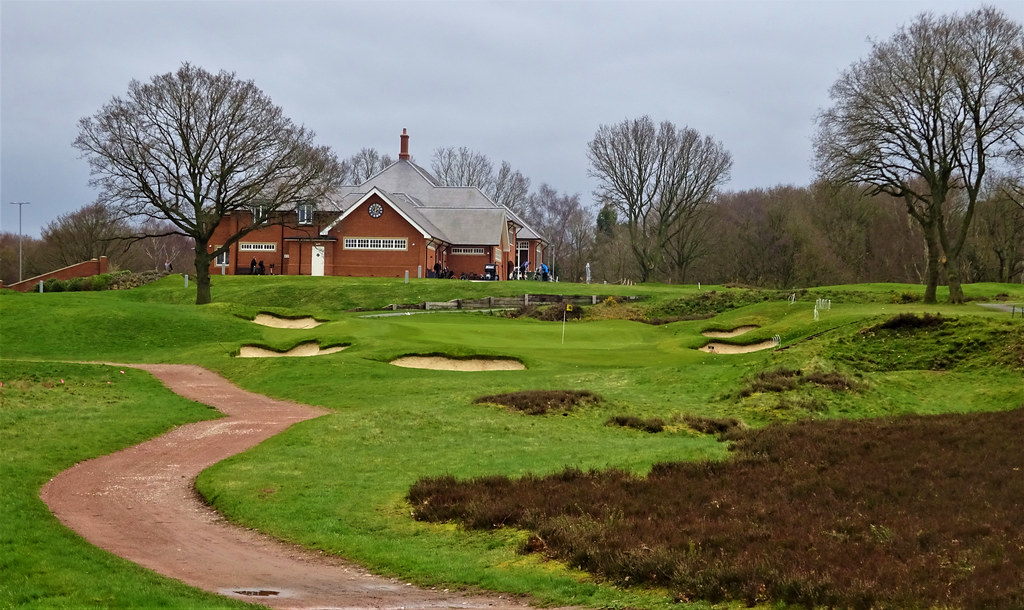

Last of the completely new holes, the 8th is more in keeping with the older parts of the course.

The side ends with a long walk through the HS2 grounds to the 9th. This uses the old 11th approach area and green. The tee shot used to be played from well left and back of this photo. To my eye, this hole would be miles better with the six or so trees in front of the bunkers removed. In the summer these bunkers will be mostly buried behind trees. There could even be fairway either side of the bunkers to add a bit of flash. Before and after.


A handsome hole, the 10th (old 12th) moves downhill. There is an illusion of a dogleg due to the angled green running away from play. There is loads of dead space between the mounds and the green.

Behind the green.

An excellent short hole, the 11th (old 13th) has a sunken, angled green which runs away from the tee. The flag is about 25 feet from the rear edge of the green. The contouring off the backs of the bunkering is very good. There are also some blind rear bunkers for the over aggressive players.

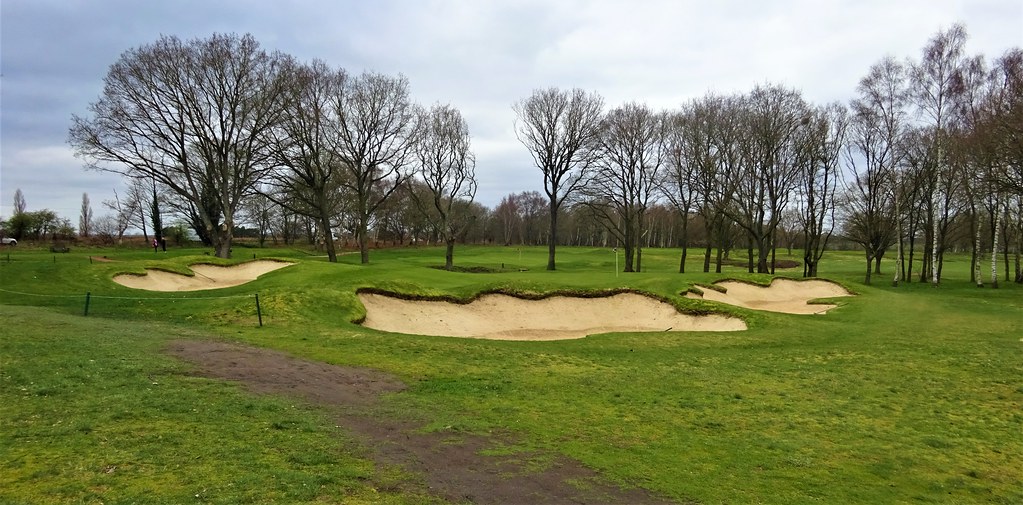

One of the best holes Whittington Heath has to offer, #12 (old 14th) tee fits snugly between 11 and 14 greens. YES, the green falls away from the fairway!

The green also moves against the grain of the dogleg by sloping right to left.

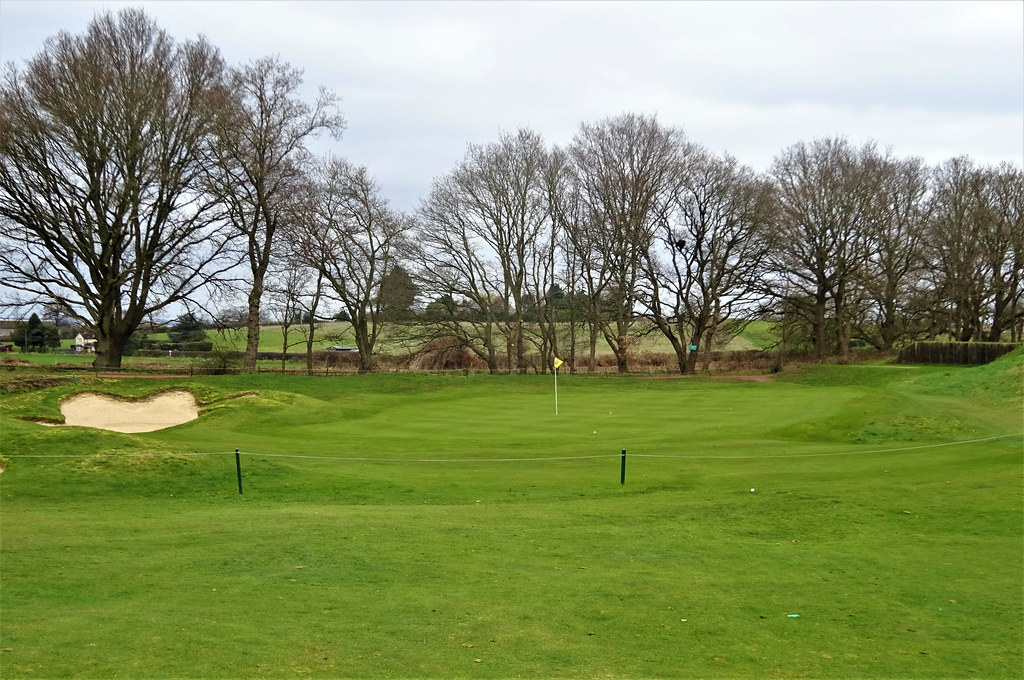
13-15 are good holes which gradually take us back in the direction of the house. All are tricky and challenge the best players not least because of some awkward elements. The long one-shot 13th (old15th) is difficult to visualize from the tee, but the new bunkering helps. There is also serious tree encroachment on the right, but given there is a road on this side the trees make sense.
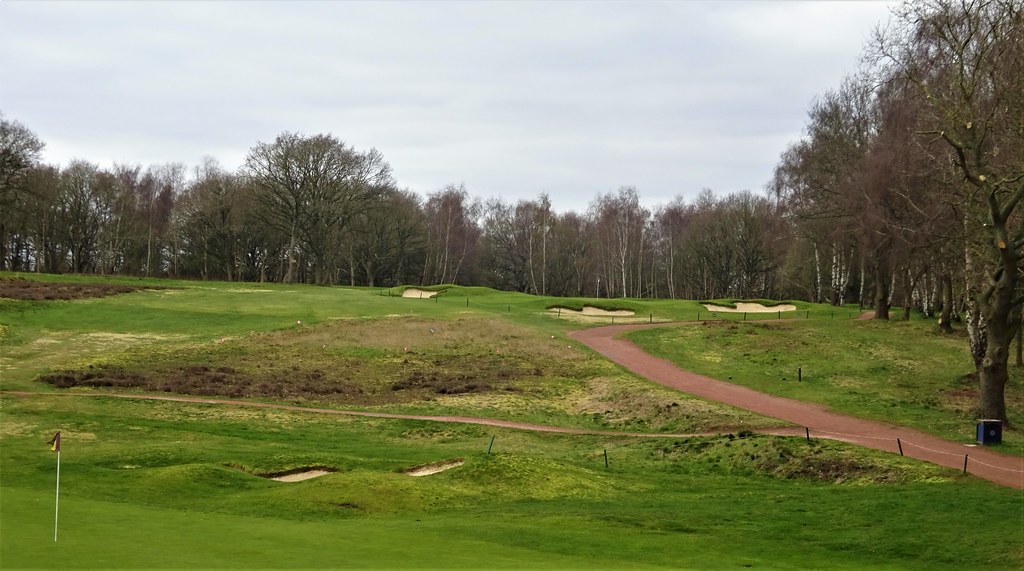
Reminiscent of the 10th, the 14th (old 16th) had a bit more radical treatment. There was a line of bunkers well short of the green which mainly were removed. Consequently, the view of the green has been opened up.

The 15th (old17th) too has been altered by placement of two bunkers. Previously, the hole was bizarre with a very narrow fairway which turned left around a large swath of rough. Visually, the hole was a mess. The new bunkers are a great improvement.
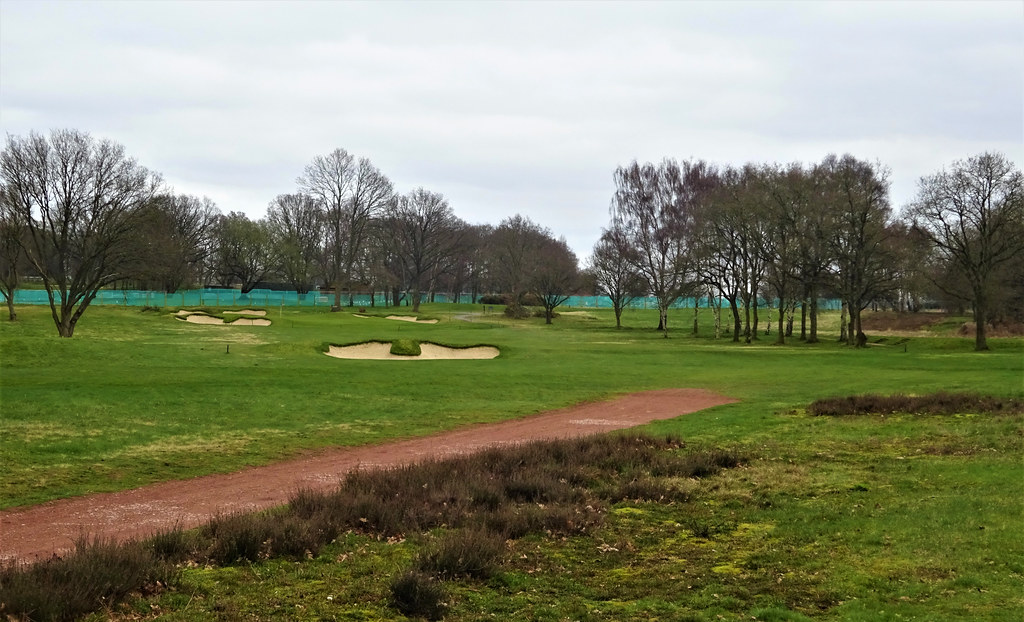
Good green.

While downhill, the 16th used to be moreso when played from further right as the 10th. The front to back green is in my experience one of the most severe of this type.
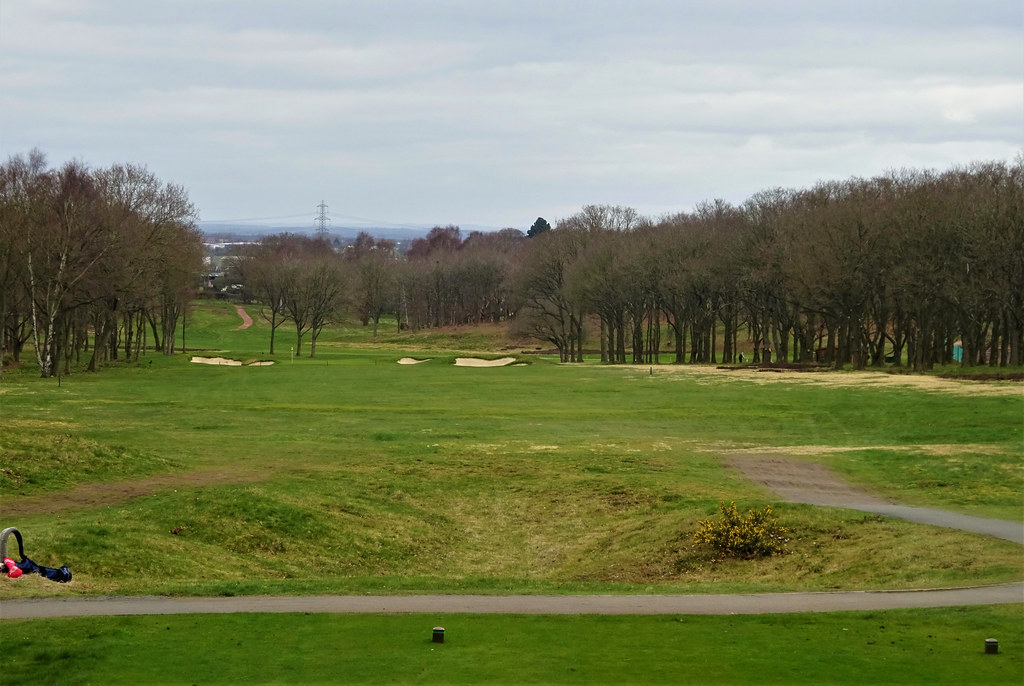
An older photo showing the old 8th in the background. The green is now a practice green.

Its a long walk over the HS2 to reach the very mediocre three-shot 17th. The old 18th green is used for this hole with altered bunkering. I am not sure why this forward 18th tee is directly in play for the approach to 17. Someone has a deathwish.

The final two holes add up to 900 yards and make for a bit of slog. That said, the approach to 18 (old 1st with new green) has a certain appeal.

Despite the rather staid finish, Whittington Heath remains good and certainly one of the better courses in the Birmingham area. In fact, Whittington Heath is good enough to host Open Regional Qualifying now and again. Despite the ravages of HS2, if invited when in the area, Whittington shouldn't disappoint. 2023
Ciao